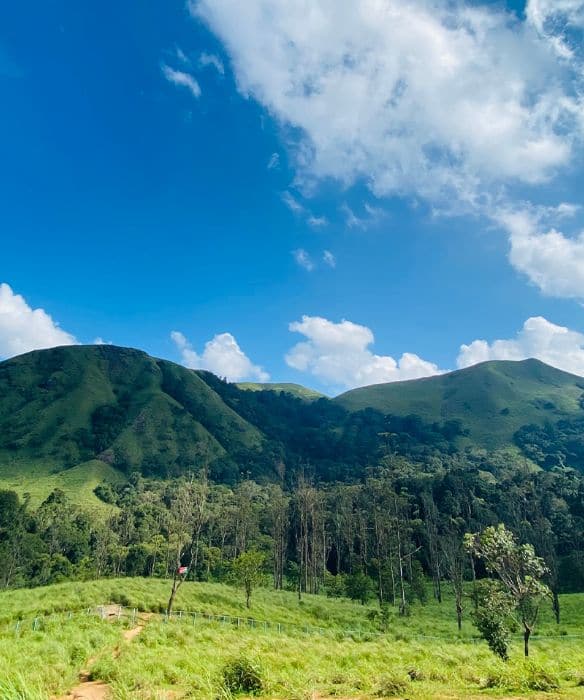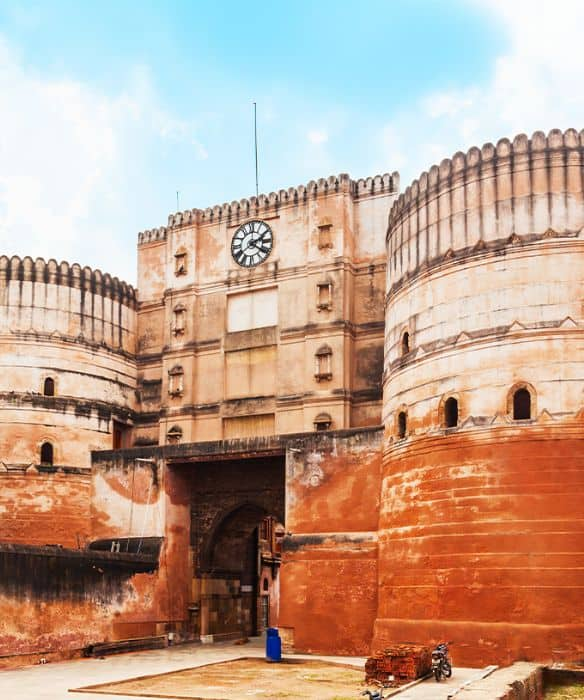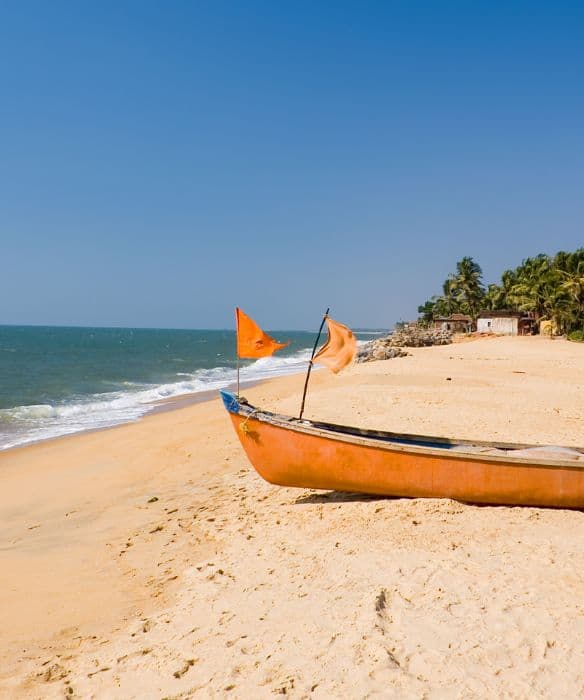Stay logged in to proceed with bookings, orders and offers.
On changing the terminal, you will loose items in your cart. Are you sure you want to change your terminal?
A visit to the mountains, which witness the best fall season in India
A few years ago, my friends were discussing the seasons of India on their WhatsApp group. Somebody remarked that India experiences only three seasons — summer, monsoon, and winter. Another friend from Mumbai said there are only two seasons — the Hot season and the Wet season. I entered the chat to share my unsolicited travel wisdom; the Indian subcontinent has six seasons — Grishma, Varsha, Sharad, Hemant, Shishir, and Vasant, which translates to Summer, Monsoon, Autumn, Light Winter, Peak winter and spring.
My friends agreed to have experienced five of them at some time, except autumn or fall season, which they unanimously announced doesn't exist in India, unlike America, Europe, Korea, and Japan. I kept quiet, but I knew they were wrong. I have been to places in India where I experienced the mesmerising hues of autumn in all its glory. And if you, too, are unaware of the autumn season in India, let me take you on a journey full of colours and beauty.
Lahaul is a part of the Lahaul-Spiti district of Himachal Pradesh, on the north, bordering Ladakh. Lahaul is known for its rugged, isolated terrain and harsh, cold climate. Despite its remote location, it is popular among tourists like me, who are drawn to its natural beauty and cultural attractions.
Tourists visiting Lahaul can experience the region's unique culture through its monasteries and stupas, an important part of its predominantly Buddhist population. The region is also home to several high-altitude lakes, such as Suraj Tal and Chandra Tal.
It was late October 2022. I had just returned from an extended work trip from Himachal. But, as soon as I heard the news of the Atal tunnel in the Lahaul-Spiti district of Himachal Pradesh opening for tourists, I could not resist planning a trip back to the mountains. Until now, the only way to reach Lahaul from Manali was through the Rohtang Pass, which was prone to high traffic.
Thanks to the tunnel, the journey time was cut by six hours. Obviously, the reduced travel time was going to bring in a wave of tourists soon. I wanted to see Lahaul unaffected by tourists. The following day, along with my friends, I set on a trip to Lahaul to prove my word on the golden colours of autumn in India. As we crossed the 9 km-long Atal Tunnel, a world of gold and ivory opened up in front of us. The entire landscape sparkled with the golden colours of autumn.
The base of snow-coloured mountains was adorned with trees with golden leaves ready to be shed. A boulevard of golden-leafed aspen trees welcomed us as we made our way to Sissu, 11 km from the Atal tunnel. We ended our journey at Keylong, where we spent the night.
The following morning we woke up to heavy snow. We had made it just in time to witness the end of autumn. Winter began in the valley in front of our eyes. I felt like God's favourite.
Kashmir lies in the northern part of the Indian subcontinent, bordered by Pakistan to the west and China to the north and east. Kashmir is known for its natural beauty, with snow-capped mountains, beautiful lakes, and abundant flora and fauna.
Tourism is one of the most important industries in Kashmir, and is popular among domestic and international travellers. The must-visit places in Kashmir apart from Srinagar include Gulmarg, Pahalgam and Sonamarg. There are many tourist attractions within Srinagar, including the Mughal Gardens and the Dal lake. The gardens are known for their planned layout and terraced gardens. Dal Lake, at the centre of Srinagar, is known for its houseboats and shikaras (traditional wooden boats) available for hire.
Every autumn is special in Kashmir due to the Chinar tree. The leaves of the trees turn into vivid shades of red and orange as autumn sets in. These broad-leafed temperate trees shed their leaves before winter sets in. Having already seen Kashmir in different seasons, I was excited to see it in autumn, or Harud, as it is called in Kashmiri.
I visited Kashmir for the first time during spring. Wildflowers grew in abundance on the freshly sprouted grass throughout the valley. The Chinar leaves were green then. There were thousands of vibrant tulips in the garden and vivid colours everywhere.
The following year, I made another trip to Kashmir in winter. The deciduous trees stood barren, with their sooty colours complementing the white snow on the ground. But the pictures of autumn from the valley enticed me to plan a trip exclusively for the colours of autumn in Kashmir.
My friend Asif gave me a hearty welcome outside Srinagar Airport. My flight got delayed, which generally tends to happen due to unexpected weather. Nevertheless, I reached Srinagar at a good time, with lesser haze and a warmer climate.
Soon after checking into the hotel, I began my exploration of autumn in Kashmir. On the way, I realised it was not only the Chinar trees that changed colours but shrubs and creepers were radiating beautiful hues.
We began our journey with a tour of Chinar Bagh Heritage Park, named after the numerous Chinar trees on its premises. The park has many attractions, including a playground, a gazebo, and walking and jogging paths. It is a popular spot for locals and tourists alike to relax and enjoy the natural beauty of the area. The park is well-maintained and offers a peaceful retreat from the hustle and bustle of city life. The park was adorned with hundreds of gigantic Chinar trees with an orange tinge. Asif and I spent over three hours taking pictures of the trees.
The next day Asif took me to Naseem Bagh. This garden is inside the Kashmir University campus. Apart from iridescent Chinar hues, I also got the opportunity to take pictures of the golden walnut trees and the maroon ivy. the colours of autumn can be seen in the cherry blossoms of Shillong, the Shiuli flowers of Bengal, the trees of Ladakh, and the temperate trees of montane hills in the Himalayas. How can anyone say there is no autumn in India?
On the last day of my trip, I went to Nishat Bagh and Shalimar Bagh. Many popular photographers were here to capture the beauty of Kashmir. Nishat Bagh is an iconic location to photograph the Kashmir autumn. I ended my trip by spending the sunset at Shalimar Bagh. The golden rays filtered through Chinar trees and fell on the golden inscription on the walls of Diwan-e-aam inside the garden.
Having captured the essence of autumn colours in Kashmir, I made my way back home with memories and a heavy memory card.





The Adani One expressly disclaims all liability, direct and indirect, in respect to actions taken or not taken based on any or all the contents of this Blog. The Blog is an opinion of the contributor based on the collation of data from various sources and is provided only for information purpose. Adani One does not canvass, advertise, solicit, invite or induct for any product, merchandise, information, brand or any other materials mentioned in the Blog, nor does it obtain any monetary benefit from the same. Reader is advised to read and apply his/her intellect and discretion in this regard. Any Intellectual Property mentioned in this blog belongs to the rightful owner. We do not intent to claim any interest over the same.